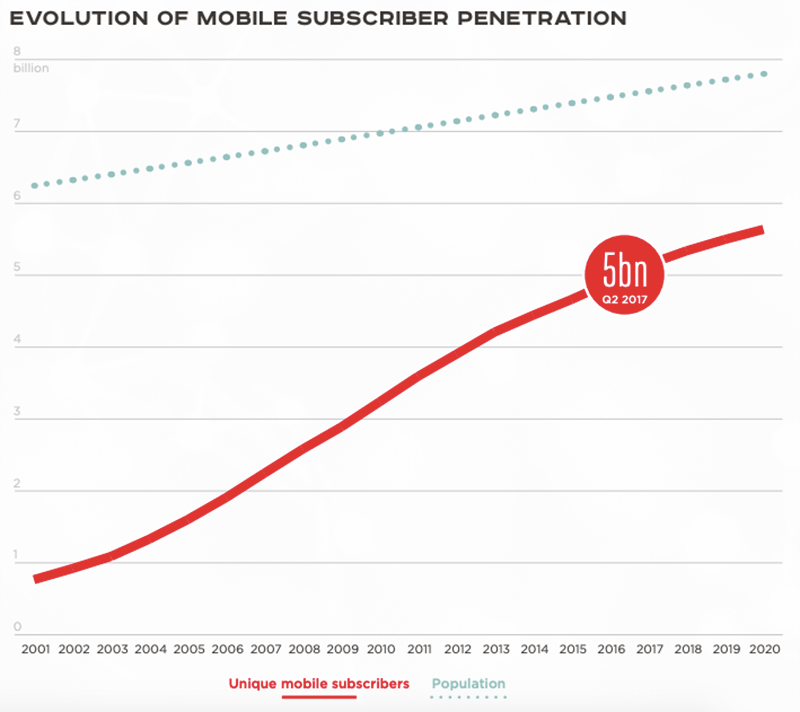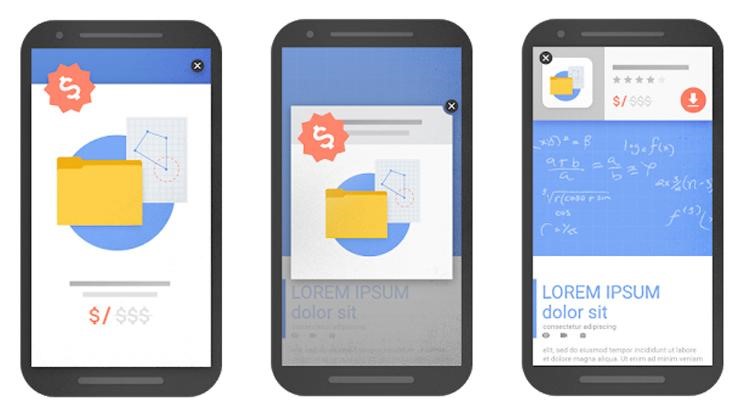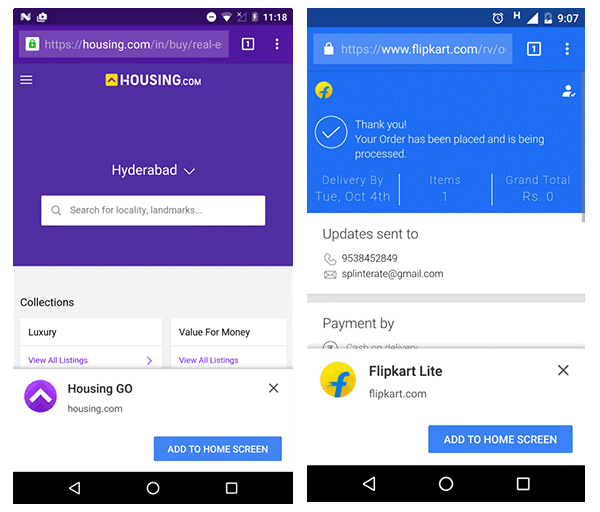Your starter’s guide to mobile marketing

Although the term digital marketing was used for the first time in the early nineties, at the dawn of the World Wide Web, it was only at the start of the new millennium that it entered popular use. And ever since the launch of smartphones, you’d be hard pressed to find a single marketer who doesn’t use it multiple times in a day. But a subset of digital marketing – mobile marketing – is almost as old, but doesn’t attract nearly as much attention, particularly when it comes to small and medium-sized businesses (SMBs). You could argue that as a subset of digital marketing it is implied whenever anyone talks about digital marketing, yet many articles on digital marketing don’t even mention mobile marketing.
Which is unfortunate, since in the era of smartphones, mobile marketing is critical to the success of any marketing campaigns, and in reaching your customers where they are. And it isn’t something that is dependent on your business having a mobile app; a mobile app does unlock unique mobile marketing opportunities, but mobile marketing is about so much more than mobile apps, as this guide will show.
Mobile marketing explained
Although we frequently talk about mobile marketing in the context of smartphones, it isn’t limited only to smartphones. The first iteration of mobile marketing predates smartphones by almost ten years. As the name suggests, mobile marketing is all about marketing your brand, your business, and your offers to your audience via their mobile devices. It started with text messages - first SMS, and then MMS as mobile phone technology improved – before expanding to include mobile websites (very basic before smartphones), email, and voice calls, and mobile commerce. And in the smartphone era, it now also includes mobile apps, which have made it possible for mobile marketing to be even more targeted.
What makes mobile marketing important
GSMA Intelligence’s Global Mobile Trends report for 2017 reveals that more than two-thirds of the world’s population are now mobile subscribers, having reached the 5 billion mark in the second quarter of 2017.

Although the rate of growth is now slowing, it is long past the point where any business owner can continue to ignore the importance of mobile. This figure doesn’t differentiate between smartphone and feature phone, but a 2017 survey by Deloitte had more than 80 percent of respondents stating that they owned a smartphone. And a third of these users claim to check or use their mobile phone within five minutes of waking up.
But mobile marketing isn’t important only because people are so close to their mobile phones; it also offers marketers a number of marketing channels or ways of reaching their customers. If your own research shows that the majority of your audience use feature phones rather than smartphones, it doesn’t translate into you not being able to use mobile marketing. It merely restricts the channels you can use, so your strategy would focus more on text messages, and maybe email, while a business with an audience made up primarily of smartphone users still has access to both of those channels, in addition to being able to use mobile search, mobile optimised websites, and possibly a mobile app.
Google’s “Mobile Path to Purchase” report further reinforces the importance of mobile, revealing how:
- when searching for - or researching - new services or products, the majority of customers now do so on a smartphone
- many of them are already expecting to make a purchase, so the focus is on businesses with a physical location that is close to the customers' location
- more than 90 percent of these customers will go on to complete a transaction
Using a mobile phone to research products and services suggests an element of immediacy; these customers aren’t only looking for good deals, they are also looking for where they can get the product or service today.
Getting started with mobile marketing
All marketing begins with knowing who your audience is – both existing and potential – and understanding their behaviour. And introducing mobile marketing to the mix is no different. If you’re an established business, you already have a pretty good idea of who your audience is, but you will still need to do some additional research to understand their use of mobile phones, and what aspects or features of mobile marketing they are most likely to respond to. From there you can move onto establishing your goals for mobile marketing. Think about what you want to achieve through mobile marketing: is it to grow brand awareness; the size of your customer base; retain customers if you suffer from a high churn rate; or to increase sales. Usually, you will have a primary goal, and one or more secondary goals, and what they are will also influence which aspects of mobile marketing you introduce to your overall digital marketing strategy.
Only then can you start finalising what your mobile marketing strategy will look like, and start determining what KPIs you will be monitoring, remembering that what isn’t measured can’t be improved. Your KPIs also help you determine whether you are achieving your goals and help you see what parts of your mobile marketing strategy aren’t performing as intended. Don’t be hasty in dropping any underperforming mobile marketing tactics, especially if you’re new to mobile marketing. Instead, try to understand why it isn’t performing, because often incremental changes to how you implement a specific mobile marketing tactic, along with the marketing content, can start to deliver better results. After all, a large component of marketing is about continually improving your knowledge and understanding of your audience and optimising your strategy to match.
Compendium of mobile marketing terms and strategies
Text messages
SMS and MMS haven't changed too much over the years, but text messages are still a very effective marketing tool regardless of how much of your audience use smartphones or feature phones.

Text messages are rather plain, so are best used for sending out useful reminders, or time-based offers that don’t require any dressing up. But as with email marketing, make sure you have each user’s permission to send them text messages, and that each message includes details on how to opt-out of receiving future messages. It is also important to send messages out at the right times: nobody appreciates receiving a marketing text at night, so stick to sending them out during regular business hours, and only during the week. Monitor responses to further fine-tune timing, so in the future, you can send specific messages when they are most likely to generate the most favourable response.
Push notifications
Push notifications are very similar to text messages but are only available to businesses with their own mobile app, can only be sent to people with your app installed, and like text messages, they are permission based. When someone installs and uses your app for the first time, they need to be asked if they want to receive push notifications.

Push notifications can be much more targeted than text messages, so while you can still send out notifications that remind a customer of an appointment they made, or to let them know when to expect a delivery, you can also set triggers to send out specific notifications when a user performs a certain action in the app, or even when a user happens to be within a certain distance of your business. So, a food establishment could send out a notification of their daily lunchtime specials, but only to users who happen to pass within 500 metres of their business between certain hours.
Mobile optimised website
Once, having a mobile-friendly website meant having what is commonly referred to as a responsive website, a single website that adapts to whether it is being viewed on a desktop or mobile device. But now that more web searches and website visits happen on a mobile device than on desktops, a simple responsive site is no longer sufficient. Being mobile-friendly now includes:
- Having web pages that load very quickly on both mobile devices and desktops. Customers will very easily give up or switch to a competitor’s website if your site takes too long to load. Additionally, page speed is now a Google ranking factor for sites on both desktop and mobile searches, so the slower your site is, the more invisible it could become in Google search results.
- Making it easy for customers to contact your business directly from your website. One way of doing this is by ensuring that your listed contact numbers are clickable links, so any customer can tap on your listed phone number and immediately have the option of calling your business, without having to copy and paste numbers into their phone. You can also include Google Maps for each of your locations, so customers don’t only have a visual depiction of your location, they can also open it in Google Maps and get directions from where they currently are. Chatbots and chat programmes that integrate with your website can also make it easier for customers to initiate a conversation with but aren’t always suitable for very small businesses.

- Minimal use of interstitials, or pop-ups. Again, Google could penalise sites with interstitials that are seen to be too intrusive on a mobile device, since these can significantly degrade the user experience.
Email marketing
Email marketing for mobile devices doesn’t require a whole separate strategy, but rather just a few minor tweaks to your existing strategy. As with your website, you need to ensure that any email marketing you send out looks great on both desktops and mobile devices. Plain text emails don’t require any changes, but as soon as you start including styling elements and images, you need to ensure your email adapts to the screen it is being viewed on. Additionally, limit the use of images to convey important information, since some users may have blocked images in email messages, meaning they won’t be aware of any discounts you are currently offering, or free shipping on orders if these are only communicated via images. Adding visual flair to an email helps it stand out, but just make sure the message is still clear without images.
Geolocation
Geolocation, or geo-fencing, is a term that refers to the ability for businesses to define a geographical area around any of their physical locations and to limit certain marketing messages to only being seen by customers within that area. For businesses with their own mobile app, this allows them to send very specific push notifications only to customers when they cross into this area, but geo-fencing isn’t limited only to mobile apps. Google and most social media platforms also allow you to use geolocation to limit certain posts and Google Ads to only being displayed to users within that area, which is useful for ensuring that certain marketing messages are only seen by your audience when they are close to your business, and most likely to take immediate action. If you decide to offer a time-limited discount on certain products – but only in-store – your ROI on marketing spend is likely to be greater if the offer is only promoted to customers within a few miles of your location, than if it is shown to customers hundreds of miles away.
Mobile apps
Up until two years ago, the only mobile app option available to businesses was to develop a native app: meaning an app specifically developed for iOS and/or Android, and available via the App Store or Google Play. But Google has since introduced a new option: Progressive Web Apps (PWAs). First discussed by Google in 2015, it wasn’t until 2017 that familiar brands started launching their own PWAs, often with very little fanfare. Progressive Web Apps are essentially your regular, responsive website, with some additional coding and linked files that allow your website to act as a mobile app on supported devices and browsers. PWAs are fully supported by the Android OS, using almost any mobile browser, with Chrome obviously offering the most support. Only some elements of PWAs is supported on iOS, regardless of the browser used. But the beauty of PWAs lies in the fact that the core content and features of your website/progressive web app will always be available, even when using a browser that doesn’t fully support PWAs.

Advanced features and functionality are progressively added only if the browser supports them. The primary purpose of PWAs is to make websites and web services available to all users, even those living in areas with limited internet connectivity, including Edge and 3G only connections. A core feature or requirement is that some of the content and functionality must be accessible even if the user is offline, with the ability to refresh outdated content with new content as soon as the user connects to the internet again – without the user having to actually perform any action. This makes PWAs especially appealing to businesses where a significant portion of their audience is based in rural areas or developing countries with limited mobile and internet coverage. But it doesn’t necessarily replace the need for native mobile apps for iOS and Android. As with other aspects of mobile marketing, the makeup of your audience – and their mobile behaviour – should guide you, but you can also speak to qualified experts who can help you decide whether you need a native app, a PWA, or both.
Conclusion
Without understanding what mobile marketing is in relation to digital marketing, or knowing some of the key stats covered in this guide, it is easy to dismiss it as something not relevant to your business. But, if anything, mobile marketing is more relevant to any business now than it was at the start of the smartphone era, with mobile usage having surpassed desktops for internet searches in 2015 already, and continuing to grow. But while mobile marketing is part of digital marketing, there are also unique aspects that require a comprehensive strategy that begins with the foundational knowledge of what mobile marketing is, before moving onto more in-depth guides.













